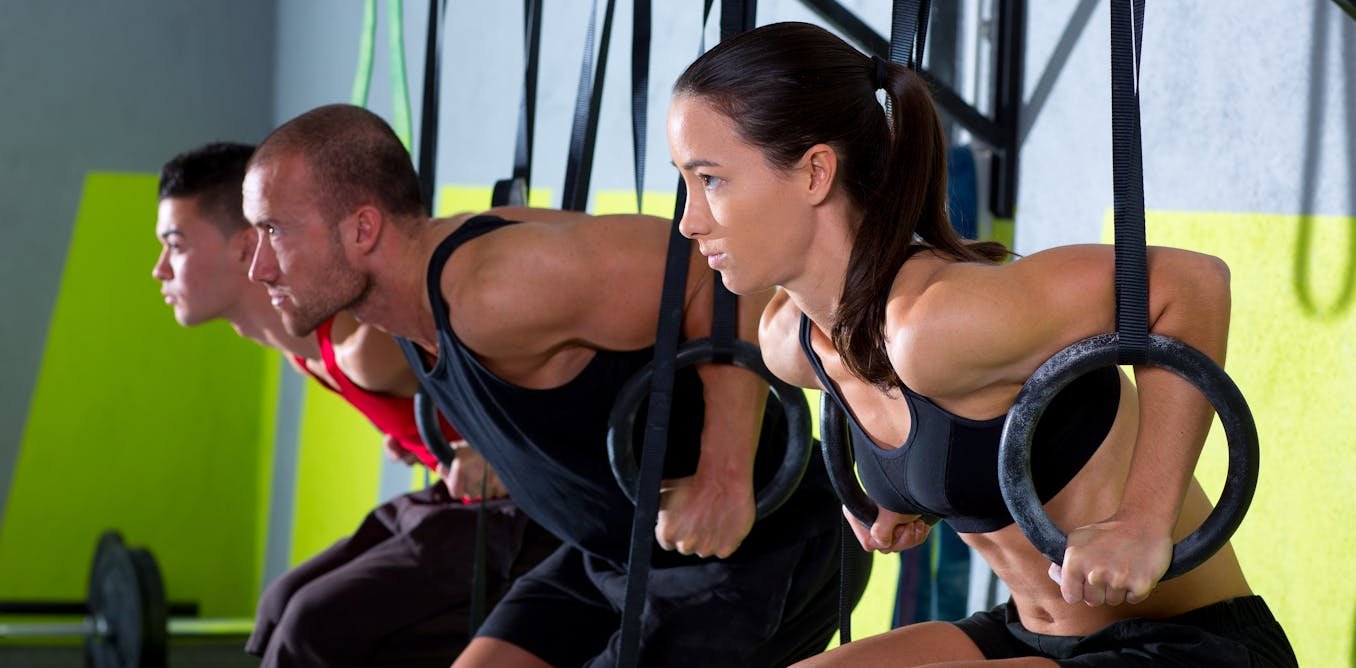Blog
Carry out males actually sweat greater than girls?
Males are usually taller than girls, however we carry out not outline gender primarily based on stature. Likewise ours newest analysis exhibits that we can not outline males and girls by their propensity to sweat (though some dad and mom and companions might counsel in any other case).
After we studied males and girls exercising in heat, dry situations, intercourse variations in responses to warmth loss (pores and skin blood stream and sweating) may very well be defined nearly completely by particular person variations in physique measurement and form.
The outcomes disprove the widespread saying that “males sweat whereas girls shine.”
How objects – and our bodies – lose warmth
The warmth lack of an object is set by the ratio of its floor space to its mass, which is described by the time period “particular floor space”. Scorching objects with a bigger particular floor space frigid quicker than these with a smaller particular floor space. Doubling the radius (measurement) of a sphere will increase its floor space four occasions however will increase its mass eight occasions: this known as “isometric development.” Isometrically bigger objects carry out not lose warmth as simply.
Form (morphology) additionally has a powerful affect on warmth loss, so a skinny rectangular prism loses warmth a lot quicker than a sphere with the identical composition and mass. In a single Earlier articleWe defined that your head is not any extra doubtless to lose warmth than another piece of your physique.
In contrast to geometric objects, animals carry out not develop isometrically; We keep a recognizable form, however our proportions change (this known as “allometric development”). That is most evident in kids, who gain bigger heads and shorter limbs in comparison with adults.
Nevertheless, doubling your weight by gaining muscle and gaining stout (with out altering your top) doesn’t consequence in a doubling of your pores and skin floor space. Such a change in weight will increase your floor space solely about 30%, which interprets into diminished particular floor space and diminished warmth loss by means of these bodily mechanisms. The bigger a individual is, the smaller their particular floor space is and the much less efficient these mechanisms are. That is the place the physiological mechanisms of warmth loss, particularly sweating, approach into play to forestall undesirable warmth achieve.
Sweating and evaporative cooling
Since human evolution in the warmth of AfricaWe gain acquired the potential to move warmth from the depths of our physique to the floor of the pores and skin with a view to dissipate it by way of the pores and skin’s blood circulation. Likewise, we acquired an evaporative cooling mechanism that may work when the air is hotter than the pores and skin: sweating. These physiological responses permit us to control physique warmth and are activated when bodily warmth loss is not any longer adequate.
To analyze the affect of physique form and gender on these two physiological responses to manage physique warmth, we realized Males and girls (60 college college students) with very completely different however overlapping physique sizes. The topics had very comparable coaching habits, endurance health and physique stout percentages.
For every participant, we calculated a goal coaching depth that immediately pertains to the pores and skin floor. This led to a comparable improve in physique temperature and an equal warmth loss requirement for all contributors. To the very best of our information, this was the primary examine to receive these leads to a morphologically distinct pattern of males and girls. Earlier researchers seem to not gain absolutely acknowledged these primary experimental design standards, leading to experiments that perpetuated the fantasy that every one males sweat greater than girls.
Our analyzes confirmed that variations in pores and skin blood stream and sweating between males and girls rely not on gender however on physique morphology.
In answering our questions, we confirmed that the textual content of “Down Underneath” (Males at Work) require a change.
Are you from a rustic down underneath?
The place girls glow and males plunder?
Whereas we approach from a land down underneath and sadly some males nonetheless plunder, girls do not shine. They sweat similar to males, and for a similar purpose: to decrease physique temperature.
Three various kinds of sweat
To discover the query of how sweat is expounded to physique odor, we want to disappear a exiguous additional.
The ever-present sweat glands that people gain for evaporative cooling are known as “eccrine” glands. Nevertheless, all of us gain two different varieties of glands in our pores and skin: “apocrine” and “apoeccrine” glands.
Whereas eccrine glands are discovered all through the physique, apocrine and apoeccrine glands gain a restricted distribution and are predominantly situated in areas the place longer – typically curlier – hair grows in adults (no matter whether or not we take away that hair).
The apocrine glands are situated subsequent to the hair follicles and secrete a milky, oily fluid. The apoeccrine glands, which seem to develop after puberty, look like the dominant gland within the axillae. Just like the eccrine glands, they secrete a watery fluid.
The odor we typically discover round sweaty individuals or their garments comes primarily from secretions of the apocrine and apoeccrine glands. These secretions are initially odorless, however the bacterial motion on this fluid leads to smelly males and smelly girls.

